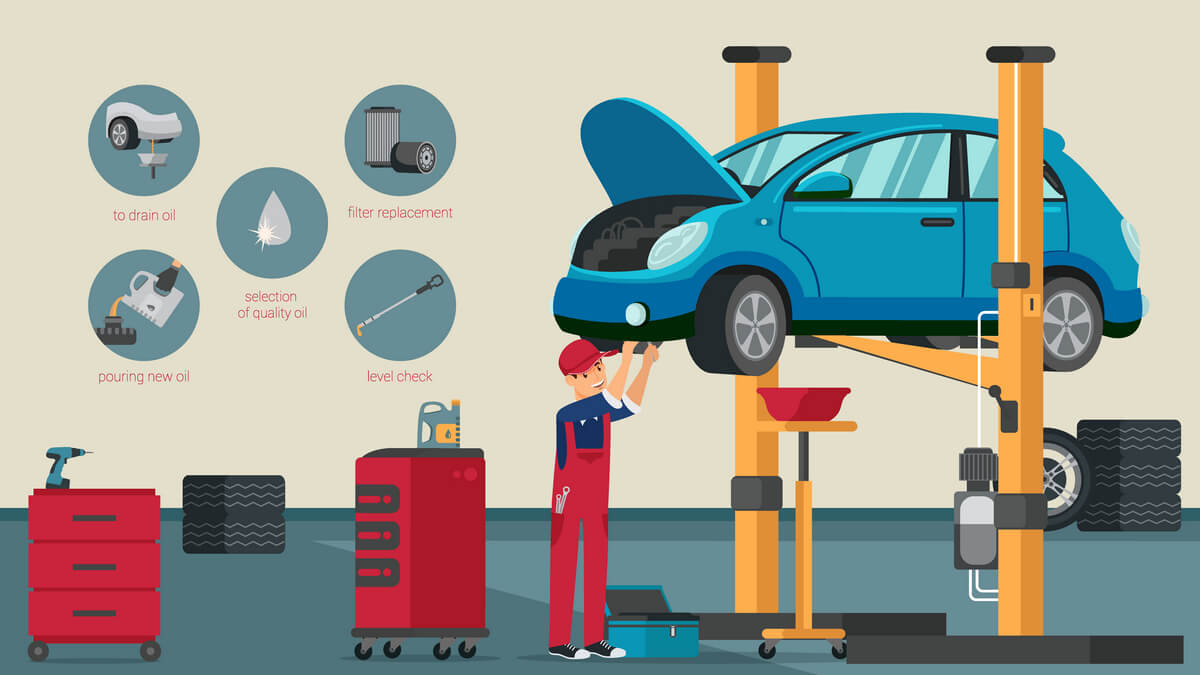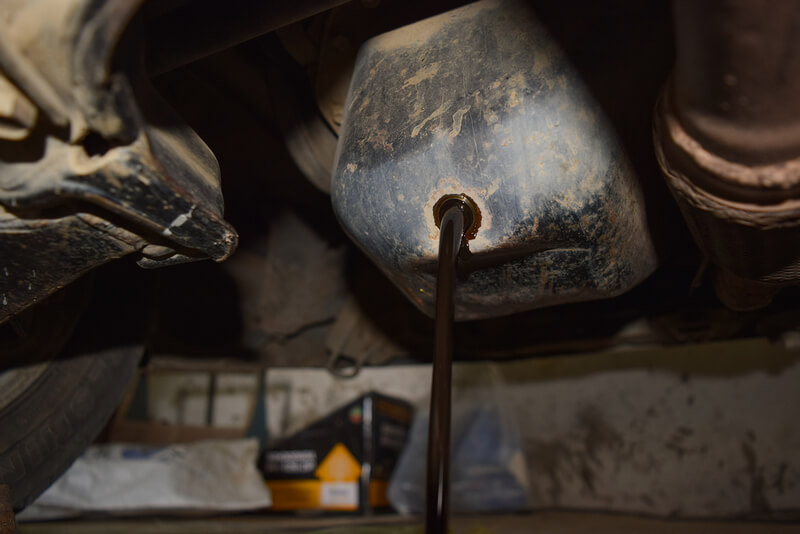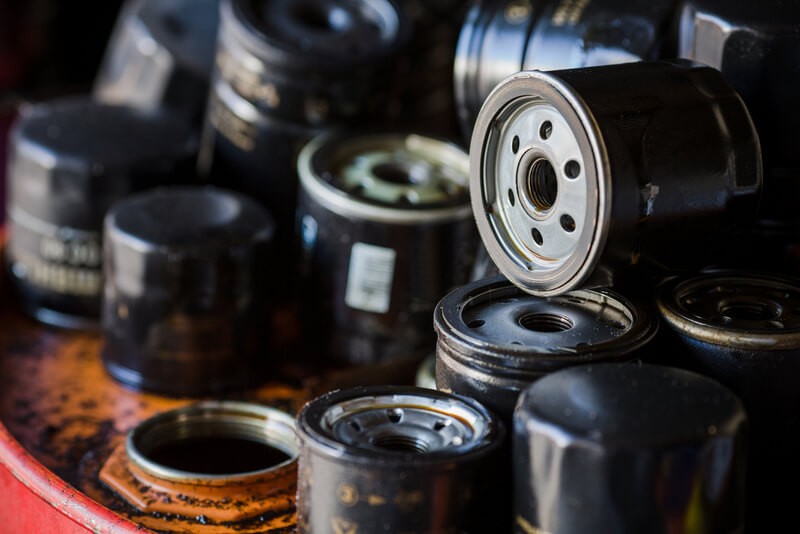
It may come as no surprise to most, but changing the engine oil in your car is as vital as putting gasoline (or diesel) in it. In the past, most people relied on mechanics to change the engine oil in their car and it's probably still the way to go for most car owners.
However, the cost of labor in car dealers skyrocketed in the past decade. That’s why, for people that cover a lot of miles, changing the oil at an auto repair shop may be costly. Luckily, this particular task is pretty straightforward, and everyone can do it with only basic tools and auto mechanic knowledge.
We've created a step-by-step guide to help you learn how to change the oil in your car and save money at the same time. In addition, we will also answer some questions owners have about changing the oil in their vehicles at the end of the article.

What You Need to Know Before Changing Your Oil
While changing the oil and filter is easy, there is still some preparation before you begin. Preparation might even take longer than changing the oil, and it is probably even more critical.
Choose the right engine oil for your car
Just buying any oil, you find at the nearest store won’t do the job. Car manufacturers always specify which oil grade is the best for your particular engine (i.e., SAE 5W-30). Suffice to say; it is crucial to follow those instructions. Otherwise, some systems in your engine may not work correctly or malfunction altogether. Also, buying a higher quality oil may be more expensive at the time, but better for the engine in the long run. Keep in mind that "more expensive" doesn't always mean "better". Make sure to buy the recommended oil for your car and you should be just fine.

Purchase a high-quality oil filter
The market today is flooded with cheap oil filters. That’s great for car owners who have a stringent budget but bad for your engine. In my experience as a mechanic, bad oil filters are often a cause for costly repairs.
Cheap filters won’t cleanse the oil as good as higher-quality ones. Some of them can even break or fold when you try to remove them. In the end, the price difference is not that great to go for a cheaper option, to be honest. If possible, choose OEM oil filters, or filters from reputable manufacturers such as Mobil, K&N or MANN.
Additional Purchases
Even though it is perhaps not always needed, we still recommend replacing the gaskets on the drain plug and oil filter. Purchasing a specialized oil drain pan is also advised, but you can use some wide and shallow household items.
Prepare the tools you need
You will need a box-end wrench of the proper size for your particular vehicle (check in the owner’s manual) to unscrew the drain plug. For the oil filter, use a standardized filter wrench. You will also need a jack to lift your car, and jack stands to keep it raised from the ground.
For protection, we recommend putting safety glasses and rubber gloves on. A rubber mallet may also come in handy to hit on the ratchet's handle if the drain plug is stuck. Since you work with oil, you will also need rags or towels – lots of them.
Is it better to change your oil hot or cold?
Changing the oil in your car while it is cold may take longer. To finish faster, warm the engine for a few minutes – the oil will become thinner, and it will flow easily.
On the other hand, if the engine is already at its highest working temperature, we recommend cooling it down for 30 minutes. Working on a hot engine can be dangerous (i.e., the oil may burn your hands).
Find a flat and firm surface
It is highly recommended to change the oil in your car on a flat and firm surface, such as asphalt or concrete. Otherwise, the jack stands may start to sink into the ground.
How to Change Your Engine Oil
- Park the vehicle on a flat surface and shift into P (automatic transmission) or 1st gear (manual transmission). Engage the parking brake as well to ensure that your vehicle doesn’t move.
- Remove the oil cap that sits on top of the engine. You can do this later, but the car may be too high for you at that point. This step is not always necessary, but it will allow for quick oil flow.
- Find the jacking points (usually behind the front wheels) and jack up the vehicle. Use a jack that has the proper capacity for your car. You can also use steel ramps to keep your vehicle high (more comfortable to work with).

- Put jack stands to hold your car jacked up. Never rely on the jack to keep the vehicle into place. Then, place a wheel block behind the rear wheels, so the car doesn’t move.
- Find the drain plug under the vehicle (usually at the lowest point of the engine).
- Put the oil draining pan under the drain plug. Make sure that the oil flows in the center of the pan. Otherwise, some of the used oil may spray on the floor.
- Slowly unscrew the drain plug with a proper wrench – the oil should start flow immediately. Use rubber gloves as some of the oil will end up on your hands.

- Wait for 5-10 minutes (depending on the amount of oil in your car) until the oil is fully drained. Then, put the drain plug back and tighten it with the wrench. You might want to replace the older gasket with a new one.
- Find the oil filter (looks like a short cylinder in black, blue or red color). On some cars, you can remove the oil filter from below, while on other you will need to jack down your vehicle to remove it from the upper side of the engine bay.

- Unscrew the oil filter using your hands (if stuck, you can use a filter wrench). Be careful, as there is still some oil inside the filter.
- Put a little bit of oil on the gasket of the new oil filter. This way, you will ensure proper sealing and easier removal in the future.
- Tighten the new oil filter with your hands (using a filter wrench might be too forceful).
- Remove the oil pan and jack down the vehicle. Dispose of the used oil properly.

- Pour the new oil into the engine. Use a funnel to ensure that no oil spills outside. Check in the owner’s manual for the right amount of oil. We also recommend continuously checking the amount of oil on the dipstick. Don’t overflow it with oil, and don’t leave it below full.

- Put the oil cap back on and tighten it with your hands. You might want to use rags for an excellent grip.
- Start the engine and let it run until the red low oil pressure light disappears from the dashboard. Turn the engine off, wait 2-3 minutes and check the engine oil level. Re-adjust the level if needed.
FAQ
When should I change my engine oil?
We recommend changing the oil at the interval provided by the vehicle manufacturer. Usually, that’s between 3,000-8,000 miles depending on the car model. However, using higher-quality synthetic oils may prolong the interval between oil maintenance.
How long does it take to change your oil?
Certified auto mechanics take about 30 minutes to perform an oil change. Expect about an hour to an hour and a half if you are not still a newbie in the matter.
What does it mean when it says change engine oil (change engine oil soon message)?
It means that you should change the oil soon or in the next few days. Modern cars have sensors that can detect when the oil is old and full of dirt and contaminants. We recommend trusting these sensors and change the oil ASAP.
